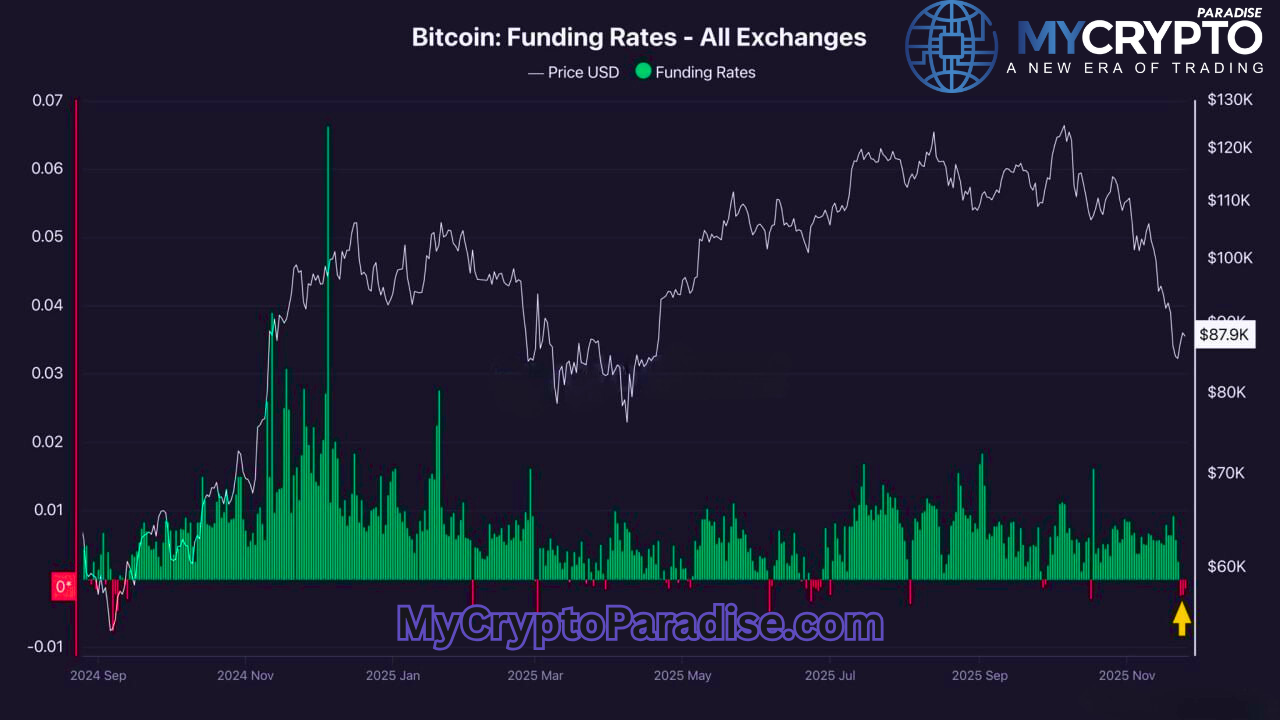In the world of cryptocurrency trading, technical analysis plays a vital role in helping traders make informed decisions. Among the many tools and patterns used by traders, the “bearish engulfing” candlestick pattern stands out as a powerful signal of a potential trend reversal.
In this article, we will explore what the bearish engulfing pattern is, how it is formed, and its significance in crypto trading.
How to Identify Bearish Engulfing Pattern?
The bearish engulfing pattern is a two-candlestick pattern that occurs during an uptrend and signals a potential reversal of the bullish sentiment. It is a top trading signal formed when a small bullish candlestick is followed by a larger bearish candlestick that completely engulfs the previous candle’s body, including both the bullish and bearish wicks.
To identify a bearish engulfing pattern, traders should consider the following characteristics:
Uptrend: The bearish engulfing pattern appears within an established uptrend, indicating a possible reversal.
Small Bullish Candlestick: The first candlestick is relatively small and bullish, signifying a temporary pause in the upward momentum.
Large Bearish Candlestick: The second candlestick is considerably larger and bearish, completely engulfing the previous candle’s body and wicks.
Volume Confirmation: A high trading volume during the formation of the bearish engulfing pattern adds strength to the signal, indicating increased selling pressure.
How to Confirm a Bearish Engulfing Signal
While spotting a bearish engulfing pattern is crucial, it is essential to confirm its validity before taking any trading actions. Traders often employ additional indicators or confirmation signals to increase the reliability of the pattern. Some popular confirmation strategies include:
Support and Resistance Levels: Identifying key support and resistance levels can validate the bearish engulfing pattern. If the pattern occurs near a significant resistance level, it strengthens the reversal signal.
Momentum Indicators: Using momentum indicators like the Relative Strength Index (RSI) or Moving Average Convergence Divergence (MACD) can provide further confirmation of the bearish sentiment and help traders time their entries.
Volume Analysis: Analyzing trading volume during the formation of the bearish engulfing pattern is crucial. A significant increase in volume during the bearish candlestick confirms the strength of the pattern.
The Probabilities of Bearish Engulfing Moving in Your Favor
Here are some key points to help identify when the bearish engulfing pattern may move as expected:
Market Trend:
Consider the broader context of the market. Is the bearish engulfing pattern occurring within a well-defined downtrend or at a significant resistance level? When the pattern aligns with existing bearish market conditions, it is more likely to be reliable.
Volume Confirmation:
Analyze the trading volume during the formation of the bearish engulfing pattern. Ideally, there should be a noticeable decrease in volume compared to previous candles. Lower volume indicates weaker market participation and lends credibility to the potential trend reversal.
Size and Proportion:
Assess the size and proportion of the bearish engulfing pattern. The bullish candlestick should be smaller and completely engulfed by the subsequent bearish candlestick. A more significant engulfing candlestick suggests greater selling pressure, potentially leading to a stronger reversal.
Confirmation Indicators:
Seek confirmation from other technical indicators or chart patterns. Combining the bearish engulfing pattern with other signals, such as support and resistance levels, trendlines, or momentum indicators like the Relative Strength Index (RSI), can enhance the reliability of the pattern.
Other Complementary Patterns:
Consider the presence of other candlestick patterns in conjunction with the bullish engulfing pattern. For example, the presence of a hammer or morning star pattern preceding the bullish engulfing pattern can strengthen the potential reversal signal.
Timeframes:
Analyze the bullish engulfing pattern across different timeframes. The pattern may carry more weight and reliability when it appears on longer timeframes, such as daily or weekly charts, compared to shorter intraday timeframes.
How to Set Up Trading Parameters For Bearish Engulfing
Setting the entry, take profit, and stop-loss levels when trading the bearish engulfing pattern involves careful consideration of factors such as market conditions, risk tolerance, and individual trading strategies. Here are some guidelines to help you determine these levels:
Entry Point
Wait for Confirmation: While the bearish engulfing pattern itself is a signal, it is generally recommended to wait for confirmation before entering a trade. This confirmation can come from additional indicators or price action that supports the bearish sentiment. Examples of confirmation signals include a break below a support level or a bearish crossover on a momentum indicator.
Determine Entry Price: Once you have confirmation, determine your entry price. This can be the opening price of the candlestick following the bearish engulfing pattern or a price level that aligns with your trading strategy and risk management rules.
Take Profit Level
Support and Resistance Levels: Identify support levels that could act as potential targets for taking profits. These levels can be derived from previous swing lows, horizontal support levels, or trendlines. The bearish engulfing pattern suggests a potential trend reversal, so targeting support levels makes sense as the price may continue to decline.
Fibonacci Retracement: Use Fibonacci retracement levels to identify potential profit-taking targets. These levels are derived from mathematical ratios that are believed to represent areas of support or resistance based on previous price swings.
Previous Price Action: Analyze previous price action to identify areas where the price has shown significant reversals or consolidation. These levels can act as profit-taking targets.
Additionally, setting a target profit level based on support levels or previous price action can help traders secure their gains.
In ParadiseFamilyVIP🎖️, we send crypto signals that you get from our team of professional traders. Reach out to us here.
Stop Loss Level
Above the Engulfing Candle: Set your stop loss above the high of the bearish engulfing candle. Placing the stop loss above this level helps protect your position if the pattern fails and the price continues to rise.
Volatility Considerations: Take into account the volatility of the cryptocurrency you are trading. If the price tends to have larger price swings, you might need to set a wider stop loss to allow for market noise and avoid premature stop-outs.
Support and Resistance Levels: Consider setting your stop loss above a significant resistance level or a recent swing high. This can provide an additional layer of protection and reduce the risk of being stopped out by temporary price fluctuations.
Placing a stop-loss order above the bearish candlestick’s high helps protect traders from potential losses if the pattern fails to materialize.
Conclusion
The bearish engulfing pattern serves as a valuable tool for crypto traders, providing a signal of potential trend reversals during an uptrend. By understanding the characteristics of this pattern and confirming it with additional indicators, traders can make more informed decisions and capitalize on bearish market conditions.
However, it is essential to exercise caution, apply risk management strategies, and consider other factors before making trading decisions solely based on the bearish engulfing pattern. The technical knowledge you have gained from this educational article is excellent, but it is not sufficient to make a trader consistently profitable in the long term.
At ParadiseFamilyVIP🎖️, we bring together our technical analysis expertise, on-chain insights, precise sentiment monitoring, and an in-depth understanding of whale psychology with proven trading strategies and tactics. This combination ensures we deliver the best trading decisions in the form of crypto signals and portfolio management, securing long-term profitability.
👉To check the availability of ParadiseFamilyVIP🎖️ (Click it)
Our services are premium, so if you don’t have sufficient trading capital, it might not be worthwhile for you. We recommend starting by building yourself up through our FREE Telegram channels.













